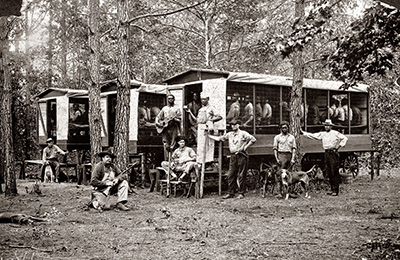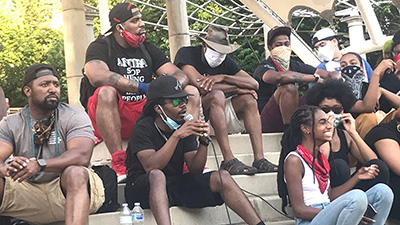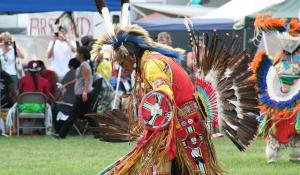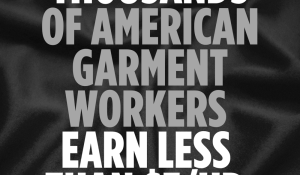
Telling the truth about history, apologizing, and paying long-owed debts are the start of
healing and reparations for Black Americans.
Every year, millions of visitors flock to Asheville, North Carolina, a city in the majestic Blue Ridge Mountains. Tourists hop on trolleys and snap photos of Gilded era mansions and estates. Others find hiking and biking trails within hardwood forests.
Like any place, Asheville has a story that is much more complex than what can be gleaned from a travel guide. Still, those who learn about the local impacts of the 1929 stock market crash or forced removal of the Cherokee from the land the city sits on can sense a history of economic turbulence and despair. For the city’s Black residents, this history lives on through legacies of enslavement, redlining, and urban development currently manifesting in the form of rapid gentrification.
Reparations, Explained
With this history, Asheville is a snapshot into the national problem of rampant racial injustice. In 2020, it decided to take its first steps into repair by joining Evanston, Illinois in enacting reparations legislation, with Rhode Island and California following suit soon after. While the movement for reparations for Black Americans has been slow, in the era of Black Lives Matter, it’s garnering more recognition for its power to heal, educate, and transform the nation.
“Being born and raised in Asheville, I already had a good knowledge base about our local history before I did the formal research. But there were more things I learned that made the need for a reparations program clear,” says Robert Thomas, Racial Justice Coalition of Asheville (RJC) community liaison. “Getting into that deeper history allowed us to make a beautiful case of why we need to repair the damages done.”
One example of that deeper history was Asheville’s convict leasing system. During the Reconstruction period after the Civil War, locking up African Americans for petty crimes like vagrancy was common. Many cities, including Asheville, used unpaid, incarcerated labor—a legalized form of slavery—to build infrastructure that would grow the local economy. This included the North Carolina railroad and multiple hotels; many of these workers died during their incarceration.

To repair this local legacy of systemic racism that endures to the present day, legislation passed in July 2020 by Asheville’s city council delivered a formal apology on behalf of the city for sanctioning the institution of slavery, enforcing segregation, and destroying burgeoning Black communities with an “urban renewal” program.
Asheville’s city council has named funding for programs that will increase homeownership and business opportunities for Black residents as a goal for the city, but Thomas says that direct cash payments are also still on the table. The RJC is focused on advocating for an inclusive decision-making process for all grassroots organizations and residents.
While it can take many forms, what makes reparations different from divesting and reinvesting programs is specificity and acknowledgment on behalf of an oppressive party. While programs that divest funds from harmful industries and into community-building initiatives like housing and education may benefit a specific group of people who are harmed because of the historic practices, those funds are not solely allocated to that group and there is not an explicit goal of restitution. The business of slavery contributed to the US’ position as an economic superpower on the world stage, largely at the expense of social, economic, and political equality for African Americans.
In 1860 alone, there were nearly 4 million enslaved people recorded in the US Census and the estimated value of their forced labor was $3 billion according to a Harvard University study—showing how extremely valuable enslaved labor was to the US economy.
Seven hundred miles northwest from Asheville, the small town of Evanston, Illinois, grabbed headlines in 2019 when its city council passed a resolution to establish a $10 million reparations fund using revenues from cannabis sales to invest in housing assistance and economic development programs for Evanston’s Black residents. In the winter 2020 Green American, Evanston’s 5th Ward alderman Robin Rue Simmons told us that “Black families were leaving Evanston at an unsettling rate because of [a] lack of access to affordable housing,” highlighting the nimbleness and creativity of local power.
While such advancements give an encouraging signal to other cities looking to start a reparations process, scholars say there’s still work to be done by the federal government which has collected colossal interest on an outstanding debt.
A 40-Acre Dream Deferred
After a meeting with a group of Black preachers in 1865, Union General William T. Sherman issued an order to distribute 40-acre plots of tillable land to freedmen and mandate that the communities formed within the new territory govern themselves undisturbed. But, the same year, President Andrew Johnson reversed the order and returned those lands back to Confederate owners.
The US government has delivered reparations to Indigenous peoples forcibly removed from their lands, Japanese internment camp survivors, and reached a settlement with survivors and families of the Tuskegee Experiment. But it has not made any major steps since Sherman’s order toward delivering reparations to African Americans who descended from enslaved people.
That’s why Representative Jackson-Lee (D-TX) reintroduced HR-40 in 2021 to create a commission to study the economic impacts of slavery and enduring racism and recommend a formal apology. HR-40 has yet to go to a vote in Congress, but in 2020, California made history by becoming the first state to launch its own taskforce to study and make recommendations for reparations.
While those who survived enslavement in the 19th century and before are no longer with us, research shows that Black Americans are still shackled with economic inequities. The ratio for white family wealth to Black family wealth is higher today than it was at the beginning of the twentieth century, according to the Brookings Institute. Median net worths for white households have continued to outpace Black ones, with Black households seeing a 44 percent decline from 2007 to 2013.
In the 2018 report, “What We Get Wrong About Closing The Racial Wealth Gap,” Duke University economists dispel the myth that the racial wealth gap can be solved through personal action. Black families whose top earners graduated from college have about 33 percent less wealth than white families whose top earners dropped out of high school, according to the Pew Research Center. (Read more about the economic costs of racism on p. 10).
Investing In Healing
What makes reparations a powerful tool for healing is its potential to invite truth-telling and reconciliation.
“For me, the formal apology is like the very small first step. It opens the door to have conversations about how to rectify the injustice,” Thomas says when reflecting on his city’s apology.

For David Greenson, a RJC member who moved to Asheville from New York, advocating for reparations is a way of becoming part of a solution that can shape our nation’s future. As a white person, he thought about leaving when he first recognized that he was part of gentrifying the city. Then he decided to do what he could while he was there to advance justice and reparations.
“The argument I often make to white people who say that they weren’t a part of any of this or that they’re good people is that all of that is irrelevant,” Greenson says. “Our country is complicit in great historical harm and harm that’s happening currently and it’s our responsibility to do what we can to find a path forward.”







